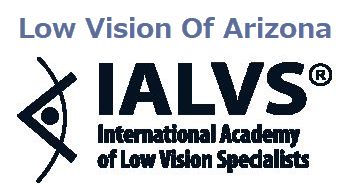
We Help Patients With Nystagmus Regain Visual Acuity
Do you have trouble seeing in dim lighting or in the dark? Do your eyes water or does your head hurt around strong lights? If the world around you seems like it’s shaking or you’re experiencing other related symptoms, it’s likely caused by an eye condition called Nystagmus.
What Is Nystagmus?
Nystagmus is a condition that causes involuntary and repetitive eye movements. The eyes move in multiple directions, up and down, side to side, or in a circular motion. The movements may be slow or fast and typically affect both eyes at the same time.
Nystagmus can be inherited genetically at birth (known as Congenital Nystagmus), or it can develop on its own later in life (known as Acquired Nystagmus). In either form, it causes the patient to have blurry vision or to feel like the things they see around them are moving or shaking.
What Causes Nystagmus?
Nystagmus can be caused by conditions like Strabismus (“crossed eyes”), Multiple Sclerosis, or a traumatic head injury. This eye disease is common among children born with albinism; a disease characterized by a lack of pigmentation in the skin. It can also develop from reactions to certain medications, like anti-seizure drugs, or from excessive alcohol consumption.
Treatment for Nystagmus
Nystagmus can make it hard to read a book, use a computer or smartphone, or see moving images like in a TV show or movie.
Does your child have Nystagmus? Maybe it’s hard for them to see their teacher or maybe they can’t make out the words that are written on the board. Bioptic telescopes can improve your kids’ distance vision for a better school learning experience. Doing research on your home computer? Software programs can make images and text on your computer screen bigger, so you can see then in larger detail.
In addition to low vision aids and glasses, talk to Dr. Paul Woolf about lighting in your home or office. Certain kinds of lighting devices can help make things around you brighter and clearer.
Nystagmus and Low Vision
One of the most common effects of Nystagmus is a loss of visual acuity. When the eyes constantly move around, they’re unable to focus on a single point or image, so the patient can’t see properly. Eye fatigue is also a common symptom as the eyes work extra hard to focus and clearly make out whatever the patient is looking at.
If you or a loved one suffers from Nystagmus, contact the Low Vision of Arizona. We help patients from all over the Gilbert, Mesa, Phoenix, and Chandler areas regain visual acuity and enjoy a higher quality of life.
How a Low Vision Doctor Can Help
At the Low Vision of Arizona, we want to help you live your life the best way you can. Our goal is to enhance your remaining vision as much as possible so that you can get back to doing the things you love with the people you care about every day.
To do that, Dr. Paul Woolf will take a look at your degree of vision loss from Nystagmus and talk to you about what you want to accomplish. Based on your needs, your low vision doctor can recommend a number of low vision aids and glasses. Certain aids can help improve blurriness, giving you clearer vision, which has been shown to slow down some of the rapid eye movements caused by Nystagmus.
So make an appointment today and let us help you get back to doing the thing you want with enhanced vision.
